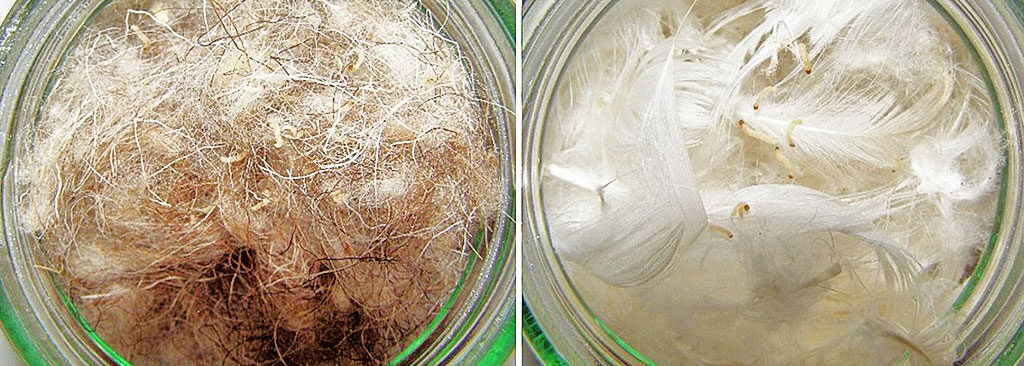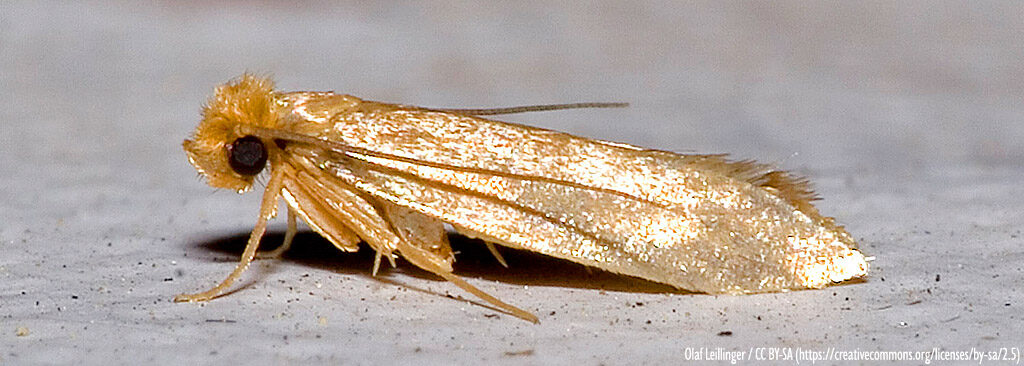
Moths
We test the efficacy of various products against clothes moths (Tineola bisselliella). Depending on the requirements of our customers, direct-spray tests, distribution tests and simulated-use tests in test rooms according to the valid published test methods are used.
- Insecticides
- Mortality test
- Direct-spray test
- Repellents
- Two-sided option test
- Simulated-use test (test rooms, Peet-Grady method)
- Attractants
- Two-sided option test
- Simulated-use test (test rooms, Peet-Grady method)
- Adhesive traps test
- Testing of products for material protection
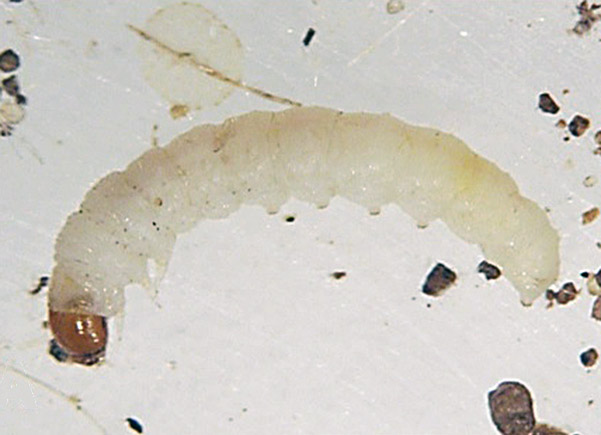
Larve 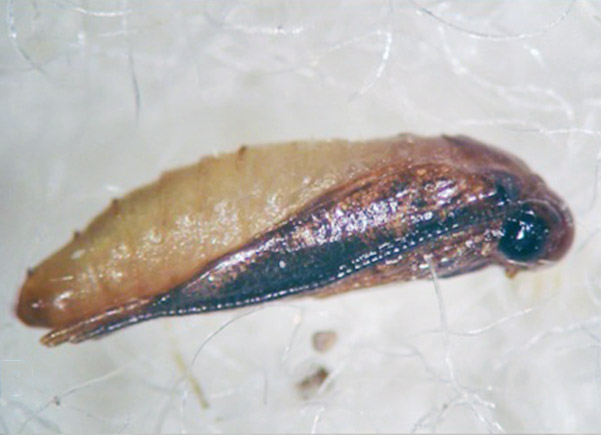
Puppe 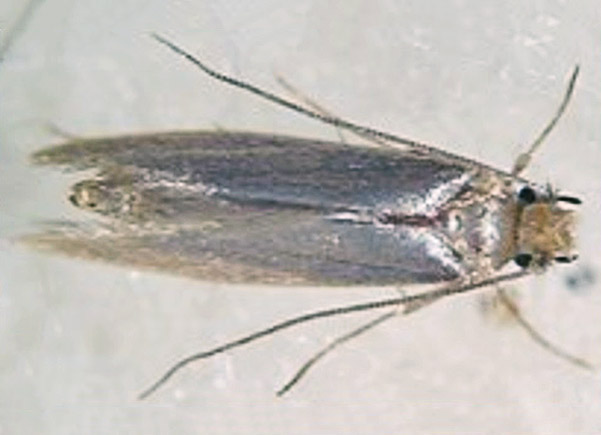
adulte Kleidermotte
Mortality tests with adult clothes moths and larvae are suitable for product testing and screening of insecticides (BPR, PT 18). For this purpose, the test products and moths are placed in boxes of defined volumes (e.g. 1 m³) and the mortality of the moths is measured in comparison to a control.
The two-sided choice test is suitable for testing repellents and attractants (BPR, PT 19). Here the distribution of moths is determined in three containers which are connected by an air flow and only one of which is equipped with test equipment (attractant or repellent). This distribution is used to calculate the repellent or attractant effect of the test product.
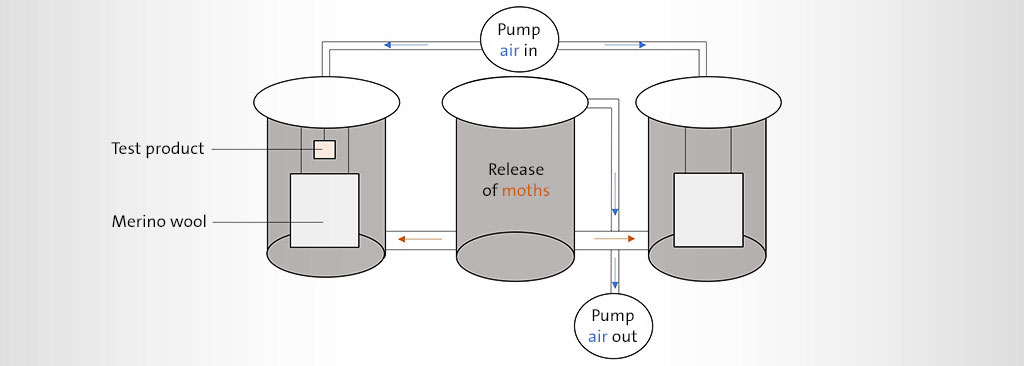
In application-oriented tests (simulated-use), e.g. with two cabinets in one test room, we test the efficacy of repellent or attractant products against clothes moths under real-life conditions (BPR, PT 18 und PT 19).
We use clothes moths to test the resistance of various insulation materials to moth damage in accordance with the CUAP (Common Understanding of Assessment Procedures).
